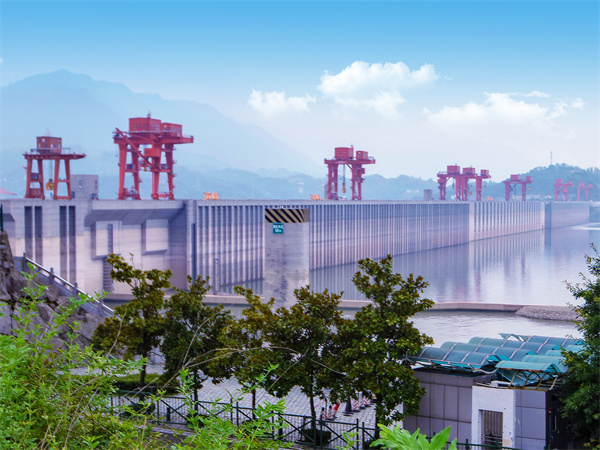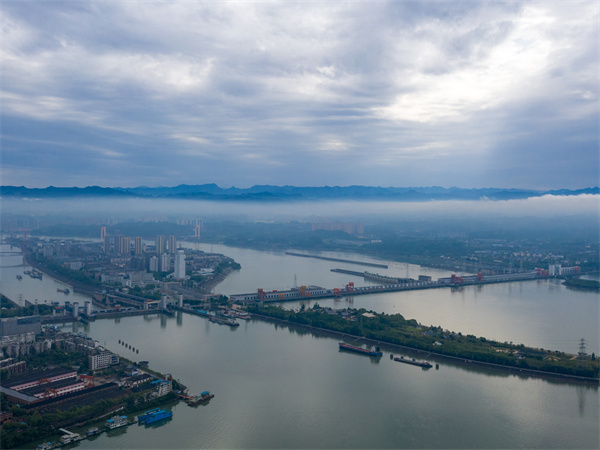Yangtze River
The Yangtze River is the longest river in China, at the same time the largest on the Asian continent, draining a basin of 1,800,000 square kilometers. It has a length of 6,300 km, the third longest in the world, only after the Amazon and the Nile.
It flows in southeastern directions through eight provinces — Anhui, Hubei, Hunan, Jiangsu, Jiangxi, Qinghai, Sichuan and Yunnan, the municipalities from Chongqing and Shanghai, and the autonomous region of Tibet, until it empties into the East China Sea, near the city of Shanghai.

Source of Yangtze River
The farthest source of the Yangtze is formed by the union of five important water currents, the Qumar, Tuotuo, Garqu, Danqu and Buqu rivers, which run through the eastern part of the Tibetan plateau, in the west of Qinghai province, to the south of the Kunlun Mountains, and on the northern slopes of the Tanggula Mountains, located on the border with the Tibet Autonomous Region. These rivers, in their high mountain origin, converge on the Tibetan plateau until they give rise to the Tongtian River.
Three Gorges Dam on Yangtze River
One of the dams on the river, the Three Gorges Dam, is the largest dam in the world and also powers the largest hydroelectric power station. The section in Yunnan Province where the river flows through deep gorges is part of the Yunnan Three Parallel Rivers Protected Areas, a UNESCO World Heritage Site.

Generally, the Yangtze River is divided into three parts.
The upper course of the Yangtze River, which runs from Yibin City to Yichang City, with a length of 4250 km. Its catchment area has an area of 1,000,000 square kilometers and mainly irrigates the provinces of Qinghai, Sichuan and Chongqing Municipality.
The middle course, between Yichang and Hukou County of Wuhan, where the river meets Poyang Lake; It is 955 km long and its basin drains an area of 680,000 square kilometers and mainly irrigates Hubei, southern Shaanxi, Hunan and Jiangxi.
The lower course, which runs from Hukou to Shanghai and the mouth of the East China Sea. It is 938 km long and its catchment area is 120,000 square kilometers. The latter comprises southern Anhui and Jiangsu, northern Zhejiang and the territory of Shanghai.

It is the largest river in the country, the Yangtze is historically, culturally and economically very important in China. Being the cradle of China's civilization and the mother river of China, like the Yellow River, it has played an important role in the history and cultural development of China. Many cultural heritage relics are found in the Yangtze Basin, such as Three Gorges Dam, Qingcheng Mountain, Mount Emei, Leshan Giant Buddha, Dazu Stone Carvings, Mount Wudang, Mount Lushan, Xidi Ancient Village Group. Hongcun, Hangzhou West Lake Cultural Landscape, Suzhou Gardens and Royal Mausoleums of the Ming and Qing dynasties.

Actually, taking a cruise on the Yangtze River is a very popular way to discover China. A cruise along the Yangtze gives tourists the opportunity to see the most spectacular landscapes. The route between Chongqing and Yichang is the most notable stretch of the Yangtze. During the cruise there are a wealth of natural landscapes and cultural relics such as the Three Gorges Dam, Gemstone Fortress and Shennong Stream. Generally when we mention the Yangtze River cruise, we refer to the one that links Chongqing and Yichang, it is very popular among tourists. For 4 days and 3 nights, from Yichang to Chongqing. If it is the other way around, they need 5 days and 4 nights from Yichang to Chongqing.
 Popular Yangtze River Tours
Popular Yangtze River Tours
 Attractions in Yangtze River
Attractions in Yangtze River
 Yangtze River Travel Guide
Yangtze River Travel Guide





























